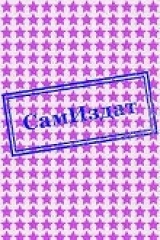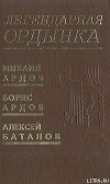
Текст книги "Port Arthur town of Knights of Round Table (СИ)"
Автор книги: Инна Тигги
Жанр:
Биология
сообщить о нарушении
Текущая страница: 2 (всего у книги 4 страниц)
On November 30, a small party of Japanese succeeded in planting the Japanese flag at the summit of the hill, but by the morning of December 1, the Russians had successfully counterattacked.
Kodama assumed temporary command of the Japanese front-line forces, but officially maintained the despondent Nogi in nominal command.
The battle continued throughout the following days with very heavy hand-to-hand combat with control of the summitt changing hands several times.
Finally, at 10:30 on December 5, following another massive artillery bombardment during which Russian Colonel Tretyakov was severely wounded, the Japanese managed to overrun 203 Meter Hill.
The Russians launched two counter-attacks to retake the hill, both of which failed, and by 17:00, 203 Meter Hill was securely under Japanese control.
For Japan, the cost of capturing this landmark was great,
with over 8,000 dead and wounded in the final assault alone,
including most of the IJA 7th Division.
For Nogi, the cost of capturing 203 Meter Hill was that his last surviving son had been killed in action during the final assault on the hill.
The Russians, who had no more than 1,500 men on the hill at any one time,
lost over 6,000 killed and wounded."
(from Wikipedia)
Destruction of the Russian Pacific Fleet
"From the vantage point on 203 Meter Hill overlooking Port Arthur harbor, Nogi could now bombard the Russian fleet by relocating his heavy 11-inch (280 mm) howitzers with 500 pound (~220 kg) armor-piercing shells on the summit. This done, he systematically started to sink the Russian ships within range.
On December 5, 1904,
the battleship Poltava
was destroyed, followed by
the battleship Retvizan
on December 7, 1904,
the battleship Pobeda and
the battleship Peresvet and
the cruiser Pallada and
the cruiser Bayan
on December 9, 1904.
The battleship Sevastopol,
although hit 5 times by 11-inch (280 mm) shells,
managed to move out of range of the guns.
The Sevastopol was still afloat, having survived 124 torpedoes fired at her
while sinking two Japanese destroyers and damaging six other vessels.
The Japanese
had meanwhile lost the cruiser Takasago to a mine outside the harbor.
On the night of January 2, 1905,
after Port Arthur surrendered,
Captain Nikolai Essen
of the Sevastopol
had the crippled battleship scuttled in 30 fathoms (55 m) of water
by opening the sea cocks on one side,
so that the ship would sink on its side
and could not be raised and salvaged by the Japanese."
(from Wikipedia)
The surrender
"With the death of General Kondratenko on December 15, 1904, at Fort Chikuan,
Stoessel appointed the incompetent Foch in his place.
On December 18, 1904,
the Japanese exploded an 1,800-kilogram (3,968-pound) mine under
Fort Chikuan,
which fell that night.
On December 28, 1904,
mines under
Fort Erhlung
were detonated, destroying that fort as well.
On December 31, 1904,
a series of mines were exploded under
Fort Sungshu,
the sole surviving major fortress, which surrendered that day.
On January 1, 1905,
Wantai
finally fell to the Japanese.
On the same day,
Stoessel and Foch
sent a message to a surprised General Nogi,
offering to surrender.
None of the other senior Russian staff had been consulted, and
notably
Smirnov and Tretyakov
were outraged.
The surrender was accepted and signed
on January 5, 1905,
in the northern suburb of Shuishiying.
With this, the Russian garrison was taken into captivity,
and civilians were allowed to leave,
but the Russian officers were given the choice of
either going into prisoner-of-war camps with their men
or being given parole on the promise of taking no further part in the war.
The Japanese
were astounded to find that
a huge store of food and ammunition
remained in Port Arthur,
which implied that
Stoessel
had surrendered long before the fight was over.
Stoessel, Foch and Smirnov
were court-martialed
on their return to St Petersburg.
As for Nogi, after leaving a garrison in Port Arthur, he led the surviving bulk of his army of 120,000 men north to join Marshal Oyama at the Battle of Mukden."
(from Wikipedia)
Losses
Russian losses
"Russian land forces in the course of the siege suffered
31,306 casualties,
of whom
at least 6,000 were killed.
Lower figures such as
15,000 killed, wounded, and missing are sometimes claimed.
At the end of the siege,
the Japanese captured
a further
878 army officers and
23,491 other ranks;
15,000 of those captured were wounded.
The Japanese also captured
546 guns and
82,000 artillery shells.
In addition
the Russians lost their
entire fleet based at Port Arthur,
which was either sunk or interned.
The Japanese captured 8,956 seamen.
Japanese losses
The Japanese army casualties
were later officially listed as
57,780 casualties (killed, wounded and missing),
of whom
14,000 were killed.
In addition
33,769 became sick during the siege
(including
21,023 with beriberi).
The Japanese navy
lost 16 ships in the course of the siege,
including two battleships and four cruisers.
There were higher estimates of
Japanese army casualties
at the time such as
94,000 -110,000 killed, wounded, and missing,
though these were written without access
to the Japanese Medical History of the War."
(from Wikipedia)
Aftermath
2004 Russian stamp «100th anniversary of the heroic defence of Port Arthur» showing the military decoration, the Port Arthur Cross
The capture of Port Arthur and the subsequent Japanese victories at the Battle of Mukden and Tsushima gave Japan a dominant military position, resulting in favorable arbitration by U.S. President Theodore Roosevelt in the Treaty of Portsmouth, which ended the war.
The loss of the war in 1905 led to major political unrest in Imperial Russia (see: Russian revolution of 1905).
Resource: Wikipedia:
https://en.wikipedia.org/wiki/Siege_of_Port_Arthur
The final end.
Later,
The Port Arthur returned back to be a part of China land as Chineese
Lüda" (Luda, Lyuda, Louda), Dalian
as Lüshunkou District / Lushunkou District / Lyushunkou District in China
https://en.wikipedia.org/wiki/Lüshunkou_District
Also known as
Lüshun Port / Lushun Port / Lyushun Port
Also known as
Port Arthur / Port Artur / Порт-Артур (on Russian) / Порт Артур (on Russian)
Also known as
Ryojun (from Japan)
*************************************************************
************************************************************
So, plenty died wounded soldiers from two side of a war conflict
as the final result, plenty died men from all sides of this conflict 1904-1905 year.
Russians had a loss of the trust to their power and highest social class ability, which moved Russians to Revolution 190, Revolution 1917, and the end of Russian Empair and all social classes, plenty people had been killed after already in Russian land via Revolutions, with a losses of lives and properties.
***
But this old conflict had some hidden stories and facts and secrets.
There were not plenty poems about this as patriotic poem to up, as usual style of any war, and just one poem had been known.
(Please, compare to poems of WWII times and poems during Port Arthur battles).
May be, some Russian felt as wrong to attack other lands of another country? As Jesus Christis asked never to take other people property in own pocket?
But it was some more hidden secrets and some secret information.
The fight for a town named as Port Arthur in a name of some British man? a Noble British man? British? English-speaking man from far away country?
Russian town Ekaterenburg, Peterburg were on names of Russian Royalty, – Russian Tsarina Ekaterina II, Russian Tsar Peter The Great, people, whom ruled as a main power.
Look, this is a great misery, mistic story to see to find a huge loss of Russian military Army and Navy staff as a fight for whom, really? For a town of Arthur? Port Arthur town? named to honor some ENGLISH-SPEAKING MAN FROM ENGLAND? British man?
Military people, The Artmy, The Fleet, they fight always for their own state, country, for their own TOP POLITICIANS IN POLITICAL POWER.
This fight of Russian military men and Russian navy men for a town Port Arthur as for their own town with name of their own country and state, had oppened a hidden secret of some hidden history about some state and a country where Arthur was a name of the Top Politician, ruled as Royal.
This mark and sign of some hidden fact when Russian and English speakers were being citizens of some huge Empair with their KIng Arthur or Emparator Arthur.
So, British people saved this fact in British legends about King Arthur, while no evedences of his grave, graves of his closed families, relatives, half-sisters, kids, nephews, castles of ruins of castles, no evedences of his decendents or decendents of his closed relatives till present time.
Plenty people listend legends of King Arthur, Wizard Merlin, Knights of Round Table, Caliburn, sword, Excaliburn, Guienevere, his wife. his son Mordred from Morgana, his half-sister.
The island England is not a huge place ot be able to search it to find ruins of castles or castles, Christian cemetery, graves.
Plenty locals lived in some places for centuries, making graves locally in their local cemeteries near churches and inside churches for Nobles, riches, and priests.
All graves now searched to make DNA genetic testing, this common for all.
It would be suprising to find a loss of memory of a place of grave of a famous King Arthur as King on England and King of British tribes and a loss of location of graves of all his relatives too.
We may easy find Roman Empair buildings, colones in island England for a time more deep in the past, saving, known locations. And ... no information for King Arthur and his relatives graves in British people memory or legend stories?
But may be this a point that KIng Arthur was a real man living in some another land far away from island England? so, his grave and his relatives graves were being not in island England?
We all know, for example, legends of Chingis Khan, as he worried to hide his grave from others.
By legends of historicans, Chingis Khan ruled Russians, Slavs during 300 years.
Russian genetic study had not finded traces of this mystic rules of Mongolians in local Russian genes of Russian men and Russian women.
Russian men had their YDNA as R1.... not as Mongolian YDNA types, shown no evedences in genetic tracing for any «Mongolian Power Invasian of Russia during 300 years».
Look, any men had a sex with some women, more riches powerfull and ... no evedences of sex Mongolian men with local Slavonic women during 300 years, while all Historician drew pictures of men on horses, a wild men, liking food, women, money, fightings.
300 years of such powerful rule and no any kids? no boys? no girls? no children? no condoms? and so, no sex of men in a wild character, on horses?
If some army came in your country, with plenty men, they defenetly would had a sex with some local females, living their kids from them.
But if they teached you this, and genetic study show clearly NO EVEDENCES of any genetic traces of presence of «some men coming abroad in a huge amount in the past», you see, some one lied and lie to you, saying «the local history facts and events» as «the local official stories» and «the history».
Your conclusions may be that
1. or the official history lied saying a lie to you and all, hidding the real history facts
1A. But if so, a curiosity to find a real history facts and events? to know the truth as this was all?
2. or the official history saved the real history facts but for people whom had lived here before you and dissapired suddenly all in one day, nobody left, to make the genetic traces in DNA to prove their old real history.
2A. But if this would be a truth, a question what was with all locals to disspare suddenly all?
2B. But if so, a question about whom are living here now as «locals», «true-locals» as their origine places for their ancestries and resons to leave to come to other lands?
3. The question of a mass loss of a memory about ancestors, origins, would be here too.
4. and needs of genetic studies to see a real genetic biological links and events, to know the real history.
5. To be an adult, to be able to know the truth.
6. To a small child to live, knowing what your parents and teachers said to you as «appropriate to your age group to know».
Plenty people grew enough to find the lie of official doctrina and history.
For example, the excavation of old building of 15-19 centuries had oppened the hidden secret of hidden ground floor and first floor levels in buildings which underground,
as underground areas, covered by some mess or a river soil mud.
This fact openned the Great Flood and The Flood events in the past, when a water lever with soil mess came, covering all ground and first floors in buildings, churches, castles, houses.
So, some building with underground small windows look were more highest, and underground modern areas were ground and first or second floors here.
Russia had plenty photoes and video to show (youtube channels) for Russian towns Peterburg, Moscow, Omsk, Saratov, ...
The analises of cemetries and rebuilding the front doors areas in churches put the information of the change of orientation North-South, East-West, as old graves had been orientated in a specific way to the East (The Sun came from The East).
People filmed cemeteries with changes of orientation of graves and the changing of location of a front doors areas in churches too, as a fact of changes location of «The East» as «The place of Sun came as sunset».
There two facts had shown
1. the fact of change of the location of The East Polus orientation.
2. the fact of huge "The Great Flood", "The Flood" evidences, covering grounds, first and second floors levels in building, as old building and churches of 15-16-and 19 centuries too, as a final result following to a modern time.
This means nobody survived if this came suddenly as The Gigantic Wave or The Wave.
This scenario as a flood with pelnty died people suddenly and covered land and buildings by a river and other soil to stay as underground areas.
In this scenario, new people coming to live, saw empty buildings and towns, to occupate empty accomodations.
if some things had been left, they were theirs as their new property.
If people came to occupate other people property, as died or missed owners properties, they disliked this to mention to say to pass for others to know, as a fear of some newcoming survivors, saying this
– "This is mine! My father (uncle, grandfather, mother, grandparents, my husbad) owed this!"
So, first they do, they shout as they are locals, they are a true-locals, as their relatives and ancestors had loved in this land, this village for 600 years! 500 years! and much more long time!!
For example, one local woman 28-38, some as her mother had shouted me this, as their ancestors had lived in particular "this small British village for 600 years and more as a true-locals! on theor true-local land!
Unfortunity for them both, I had a great curiosity to find the information as a geological, historical facts.
I knew as nobody had left alive here in particular this place during Middle Age time of Black Death by local historical records and facts, – no one!
Each local (a man, a women, a child, a monk, a rich, a poor) had been died «from The Black Death», viziting locals and their local villages.
No one had been left as a survivors by records, no one.
So, these two «true-born in UK local British females» had lied me defenetly, their ancestors lived locally over 600 years as locals.
Not, they were not. Nobody survived alive here in Middle age time, The Black death had finded each local to visit.
And so, a question, a so, a question, as a logic question to know to ask:
from what places and areas were all others as new coming crowds of new-locals?
For example, the official history of England is keeping records of Rome Empair presence in Enland island as Rome Legion males.
So, a huge amount of military soldiers and officiers of Rome Legion would left plenty true-local kids with a mix genes of locals and males of Roman Empair and Roman Legioneers and plenty Chritian Priests, whom were Italians males.
But when we see plenty look of British women and men, they did not look «Italian genes mixed».
Scottish men tried to joke on «true-British» to show a naked bottom to them, as a silly stupid joke about a possible way of a sexual use of true-born British by Rome Legioneers soldiers men (as homosexual gays sex ways of a sex, what way was apopular in Rome Empair time for males between them).
But the study of Rome Legioneers showns as plenty kings of tribes around gave their sons to serve as foreigners in Rome Legioners (as a true born Rome Empair Citizens were lazy to serve as soldiers themselves).
And so, habits of Rome Empair Citizens as a homosexual habits were nothing to spread to their servants and their military servants as people from other Ethnic and tribes.
But, British genetic pool would mixed with genes of Rome Empair and Rome Legioners too.
Rome Empair covered a huge area – Europe, France, Germany, Poland, ..., England, Egypt, Israel modern land, ... and so, Rome Legioners had been an international mix of this all men, males, plus traders, which were Jewish, probably.
I hope all data of locals DNA will be more open for studies (without names or with surname,s on a choice of people themselves).
This way to open a real history to see. we are adults to see a real history of real events.
The genetic study may prove the oficial history, or to add missed facts and links or to re-write to the official real history for adults to know things.
I know and saw a modern way as scientists took DNA samples from graves to study to know a real DNA or a real locals living before us in different places.
The huge collections of DNA popuations making links to see ways of migrations in the past.
The Old Kingdom collapsed or something and people moved.
The evedences of Great Flood and the turn of Poluses location had been known to see these facts.
This means some survivors of family, tribes, old Ethnic groups, old countries might spreaded to live where they were on a final surving days, not returned back as probably no ways was.
British people, talking on English language may open they look and their genes closed to Slavonic Russian genes look from Siberia or Ukraine, for example.
Look, if a Gigantic waves came, plenty died, some survived as their personnel chance, and if in a boat, they leaved this were they find the land, a coast, a soil to leave.
People of one family might lived far far far away, some started be Russians, some English or Scots or Europeans.
I am Russian Ethnic, birth in Russia, my ancestry from Siberia, and from Denisova cave in Altai Mountants too, and Tibet and Pamir and Alpes Mountants and mountants in Tadzhikistan.
Some of my ancestors were being Neadertals from Denisova case in Siberia, some Neaderthals from Horvatia cave in Europe (I have 3.8% DNA of Neaderthals of Horvatia cave in Europe), some Denisova race from Denisova cave in Altai Mountants in Siberia in Russia, some from Malta old village near Baikal lake in Russia.
Some humans as a genetic mix of Neaderthals and Homosapiences, Neaderthals and Debisova race and Homo Sapiences.
Some from a village near Cambridge, 6 people, a family, living here 2,300-1,300 years back in time, near Cambridge in England.
Some in Scotland, Ireland.
Some Hungarian, some Brazilians.
By geological maps of the past, climate zones, soils, the look had changed plenty times.
There were a warm zone in a modern Sibiria, plenty humans lived here, plenty animals and plants too.
A climate changes, The Ice Age, and time of melted Ice, making sea of a fresh water, and mudy places.
People moved all times to survive for their best, mixed, moved, and again. The way of a life. We all mixed, so.
So, old legends about King Arthus may be a true folklor stories, saving for us from the past.
Arthur as Artur
English "a" article, a map, a tour
a tour – A'r'tour – Artur – Arthur
a traveler, a tour, Arthur.
Or
Turkmenia and Turkey country with Turks.
A Turk – A Tur A Turk – Arthur
Ar – a half or a circle
a Rainbow look as «Ar», Ar-Ra
[Ara] = old people used hourses to make their family trips in a wagon (a cart, a wagon, a carriage) on a power of horses.
Old Gypsy people travelled by such way, in their tabor style,
first American migrants to America traveled by such way,
Circus Artists traveled by such ways,
Nobles travelled by such ways,
Priests travelled by such way,
middle class people traveled by such way,
farmers used such way, too, in the past.
Plenty travelers make a caravan or camp style look.
If to see the name Arthur, this male name near sounding to Tur, Turk.
The Tura River is.
Rivers Tura, Kura.
The old Kingdom was between rivers Kura and Tura.
Kur? = Where?
Tur = here! there are!
On Russian,
Тур = (on English):
1.tour, trip, touring (экскурсия, поездка, турне)
2. round, lap (раунд, круг)
3. aurochs (зубр)
4. stage
as the wild animal with two horns.
Turkmenistan
https://en.wikipedia.org/wiki/Turkmenistan
From Wikipedia
Turkmenistan (Turkmenia)
"Turkmenistan (Turkmenia)
is a sovereign state in Central Asia, bordered by Kazakhstan to the northwest, Uzbekistan to the north and east, Afghanistan to the southeast, Iran to the south and southwest, and the Caspian Sea to the west. Ashgabat is the capital and largest city. The population of the country is 5.6 million, the lowest of the Central Asian republics.
Turkmenistan has been at the crossroads of civilizations for centuries.
In medieval times,
Merv (!, a town Merv !)
was one of the great cities of the Islamic world
and an important stop on the Silk Road,
a caravan route used for trade with China until the mid-15th century.
[[[ See!!!
Mervin (!) as
Wizard Mervin
and the ancient town
Merv (!)
in Turkmenistan, Turkmenia
linked as the connection!]]]
[[[ Arthur, Artur
and
turk, tur,
Turkmenia,
Turkey
might be they all were linked too!!! ]]]
Annexed by the Russian Empire in 1881, Turkmenistan later figured prominently in the anti-Bolshevik movement in Central Asia.
In 1925, Turkmenistan became a constituent republic of the Soviet Union, Turkmen Soviet Socialist Republic (Turkmen SSR); it became independent upon the dissolution of the Soviet Union in 1991.
Turkmenistan possesses the world's sixth largest reserves of natural gas resources.
Most of the country is covered by the Karakum (Black Sand) Desert.
Since 1993, citizens have been receiving government-provided electricity, water and natural gas free of charge"
"Etymology
The name of Turkmenistan (Turkmen: Türkmenistan) can be divided into two components: the ethnonym Türkmen and the Persian suffix -stan meaning "place of" or "country". The name "Turkmen" comes from Turk, plus the Sogdian suffix -men, meaning "almost Turk", in reference to their status outside the Turkic dynastic mythological system.[13] However, some scholars argue the suffix is an intensifier, changing the meaning of Türkmen to "pure Turks" or "the Turkish Turks."[14]
Muslim chroniclers like Ibn Kathir suggested that
the etymology of Turkmenistan
came from the words Türk (Turk) and Iman (Arabic: "faith, belief")
in reference to a massive conversion to Islam of two hundred thousand households in the year 971."
from Wikipedia
Resource:
Turkmenistan
https://en.wikipedia.org/wiki/Turkmenistan
History of Turkmenistan
https://en.wikipedia.org/wiki/History_of_Turkmenistan
From Wikipedia
"Ancient history
Scant remains point to early human settlements east of the Caspian Sea, possibly including Neanderthals, although the archaeology of the region as a whole is underresearched.[1]
Bronze Age and Iron Age finds support the probability of advanced civilizations in the area including finds associated with a society known to scholars as the Bactria-Margiana Archaeological Complex (BMAC) – near the modern cities of Mary (previously Merv), Djeitun and Gonur Tepe.[2][3]
By 2000 BCE, Indo-European peoples had settled throughout the region. Most of the present-day Turkmenistan was occupied by BMAC-related societies and the Dahae (also known as the Daae, Dahā, Daoi and similar names) – a tribal confederation located immediately east of the Caspian. The Massagetae and Scythians were also present, immediately north of BMAC and the Dahae.
The Persian Empire around 500 BC
Alexander the Great conquered the territory in the 4th century BC on his way to South Asia. In 330 BC, Alexander marched northward into Central Asia and founded the city of Alexandria near the Murgab River. Located on an important trade route, Alexandria later became the city of Merv. The ruins of Alexander's ancient city are still to be found and have been extensively researched. After Alexander's death his empire quickly fell apart. It was ruled by Seleucids before the satrap of Parthia declared independence. The Parthians – fierce, nomadic warriors from the north of Iran – then established the kingdom of Parthia, which covered present-day Turkmenistan and Iran. The Parthian kings ruled their domain from the city of Nisa – an area now located near the modern-day capital of Ashgabat – founded by Arsaces I (reigned c. 250-211 BC), and was reputedly the royal necropolis of the Parthian kings, although it has neither been established that the fortress at Nisa was a royal residence nor a mausoleum.
Excavations at Nisa have revealed substantial buildings, mausoleums and shrines, many inscribed documents, and a looted treasury. Many Hellenistic art works have been uncovered, as well as a large number of ivory rhytons, the outer rims decorated with Iranian subjects or classical mythological scenes.
The ten tribe Proto-Turkic tribal confederation
The Parthian Kingdom succumbed in 224 AD to the Sasanids – rulers of Iran. At the same time, several tribal groups-including in the Huns of Kushan controlled Balkan Province in 91 AD according to Tacitus and later the Alans according to Chinese records -were moving into Turkmenistan from the east and north. Although Ancient Persian traditions always mentioned the Turanian control of the area, these records provided the first independently corroborated evidence of nomadic Non-Iranian peoples into the area of Turkmenistan.
By the early 4th century AD, a Kushan noble from the Balkan province called Malkar of Khi, had become leader of the Huns settled there. In alliance with Dulo the Alan king on the Volga Delta, Malkar went on to forge ten tribes into the first proto-Turkic tribal confederation. The Dulo clan's first proto-Turkic Empire spread its influence as far east as the sub-continent under the Kitolo and as far west as Central Europe under Attila's Dulo. Wresting control of southern Turkmenistan from the Sasanian Empire in the 5th century AD, Malkar's «Dulo» Confederation of Ten Tribes caused a migration of Khurasanis into Dagestan as the Caucasian Avars.
As a result of this backfire, the Sabirs settled there were forced to attack the Alan strongholds of the Dulo Ten Tribe Confederation in the Kuban steppe. To strengthen their position, Malkar's Confederation of Ten Tribes now under the leadership of Ernakh entered into an alliance with Byzantium at Phanagoria
in the 460s AD.
However,
in the 550s AD,
the Caucasian Avars pushed further conquering Phanagoria and forcing Sarosios of the Alans to petition Byzantium for land. Within a few years, Dulo's Ten Tribe Confederation in Balkan Province allied themselves to the Ashinas forming the Western part of the Gokturk Empire and were able to snatch Phanagoria back from the Avars renaming the Sabirs as Khazars under the rule of Kaghan Kazarig.
By exposing the Avars' close ties to Persia, once again the Ten Tribes of the Dulo entered into alliance with Byzantium.
However, the Dulo clans Ten Tribes soon seceded from the Gokturks to become the Western Turkic Kaghanate which thrived
until 630s.
They appointed Dulo Kaghan Kubrat to establish the short-lived state of Old Great Bolgary disintegrating upon his death with the majority migrated west where they carried out
the first
Hungarian conquest
in 677 under Kotrag who also went up the volga to establish Bolgary, and Batbayan's Balkars who settled down with the Circassians north of the Caucasus.
The Kara-khazars in the Balkan Province eventually revolted against the Aq-Khazars to establish the Yabghu Oghuz State of the Kara dynasty which produced the Seljuks who thrived until their dynasty was taken over by Temujin.
At this time much of the population was already in settlements around the fertile river valleys along the Amu Darya,
and
Merv and Nisa
became centers of sericulture (the raising of silkworms).
A busy caravan route, connecting Tang Dynasty China and the city of Baghdad (in modern Iraq), passed through
Merv.
Thus, the city of Merv constituted an important prize for any conqueror.
Arab invasion and Islamization
Central Asia came under Arab control after a series of invasions
in the late 7th and early 8th centuries
and was incorporated into Islamic Caliphate divided between provinces of Mawara'un Nahr and Khorasan.
The Arab conquest brought Islamic religion to all of the peoples of central Asia.
The city of Merv was occupied by lieutenants of the caliph Uthman ibn Affan, and was constituted as the capital of Khorasan. Using this city as their base, the Arabs, led by Qutayba ibn Muslim, brought under subjection Balkh, Bokhara, Fergana and Kashgaria, and penetrated into China as far as the province of Kan-suh
early in the 8th century.
Merv achieved some political spotlight
in February 748
when Abu Muslim (d. 750) declared a new
Abbasid dynasty
at Merv,
and set out from the city to conquer Iran and Iraq and establish a new capital at
Baghdad.
Abu Muslim was famously challenged by the
Goldsmith of Merv
to do the right thing and not make war on fellow Muslims.
The Goldsmith was put to death.
In the latter part of
the 8th century
Merv
became obnoxious to Islam as the centre of heretical propaganda preached by al-Muqanna "The Veiled Prophet of Khorasan". Present Turkmenistan was ruled by Tahirids between 821 and 873. In 873 Arab rule in Central Asia came to an end after Saffarid conquest.








